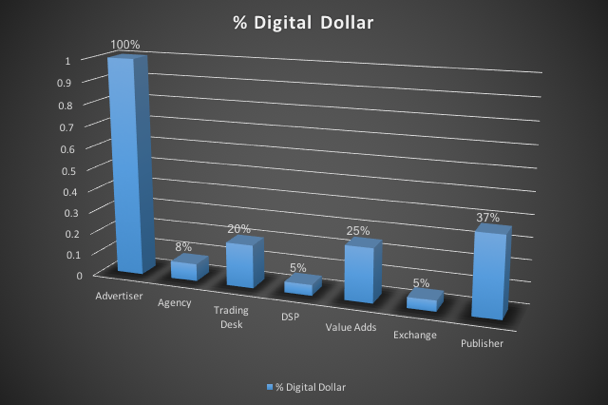 It was with great interest that I read an article on Digiday dealing with “key issues” facing ad agencies and, ostensibly, the “agency model” ranging from transparency to in-housing.
It was with great interest that I read an article on Digiday dealing with “key issues” facing ad agencies and, ostensibly, the “agency model” ranging from transparency to in-housing.
Masked behind the author’s perspective that transparency comes at a high cost was the reality that marketers remain at risk to the predatory non-transparent revenue practices applied by certain agencies.
Why? With marketers demanding more transparent ad buying practices and transitioning certain tasks and or ownership of elements of the tech stack in-house, agency gross margins are under pressure. In turn, this has created an environment where agencies attempt to make up for the margin shortfall from clients that don’t actively monitor agency contract compliance, financial management or media performance.
Of note, one anonymous agency executive went so far as to suggest that some agencies use a “traffic-light system to determine how knowledgeable the procurement teams at clients are.” This guidepost allows the agencies to assess how much margin they can make on a given account.
This certainly reinforces the reality of the old adage; “Where there is mystery, there is margin” and signals the importance for all marketers to get up to speed on both the potential benefits and the pitfalls related to their digital and other advertising investments. For client organizations, most of which do not have the bandwidth or subject matter expertise in-house, engaging an independent contract compliance or media performance auditor or consultant could greatly help to mitigate risks in this area.
In spite of the potential for efficiencies that fueled the rise of programmatic media buying, what we have all come to realize is that the costs related to algorithmic, machine-to-machine buying have far outweighed these efficiencies. One dynamic, which drives costs is the number of agent firms involved in a typical programmatic digital media buy and the fees that each charge for their role. Below is an overview of typical fees or mark-ups that are charged by those on the demand-side of a programmatic transaction (source: Industry Experts).
As is readily apparent, the dollar dissipation that occurs between the advertiser’s initial investment and the money that actually ends up with the publisher is significant. Industry studies have consistently shown that less than forty cents of each digital dollar invested makes its way to the publisher.
To combat this trend, rightly or wrongly, marketers have focused on reducing the number of intermediaries and the fees charged by each, with the goal of improving working media ratios and ultimately the performance of their digital campaigns. Thus, the agency margin squeeze.
That said, the agency practice described in the aforementioned Digiday.com article of taking advantage of unsuspecting, less knowledgeable clients to make up for the margin lost on those that have moved to transparent buying models, is neither appropriate nor sustainable. Agencies conducting themselves in this manner may want to reflect on the words of the renowned physicist, Stephen Hawking:
“Intelligence is the ability to adapt to change.”
This is particularly true given the competitive inroads being made by the management consultant and tech consultancies that are focusing on the digital media segment of the market. The best path forward for agencies is to actively engage their clients in an open dialog about mutually beneficial remuneration methodologies.
In our opinion, it is right and just to eliminate the potential for media arbitrage, non-disclosed fees, no charge media weight and volume-based rebates that often accrue to agencies, and much of the time without the advertiser’s knowledge. Further, we also don’t believe that clients are obligated to make up the gap in lost agency revenue tied to transparency reforms. That said, we are fully supportive of an agency’s right to earn a fair and reasonable profit and to have the potential for incremental gains tied to extraordinary performance.
Near-term, the best way to balance an advertiser’s quest for transparency and an agency’s ability to generate a reasonable profit will likely be a compensation schema that incorporates a base fee using a direct-labor or cost-plus methodology with an outcome-based performance incentive. This approach is particularly apropos for advertisers that are leaning toward a managed-service model. With this approach, ownership of the tech stack and or tech platform licensing agreements transition from agency to advertiser; and the agency is then engaged to oversee the digital planning, buying and ad operations chores associated with programmatic media.

